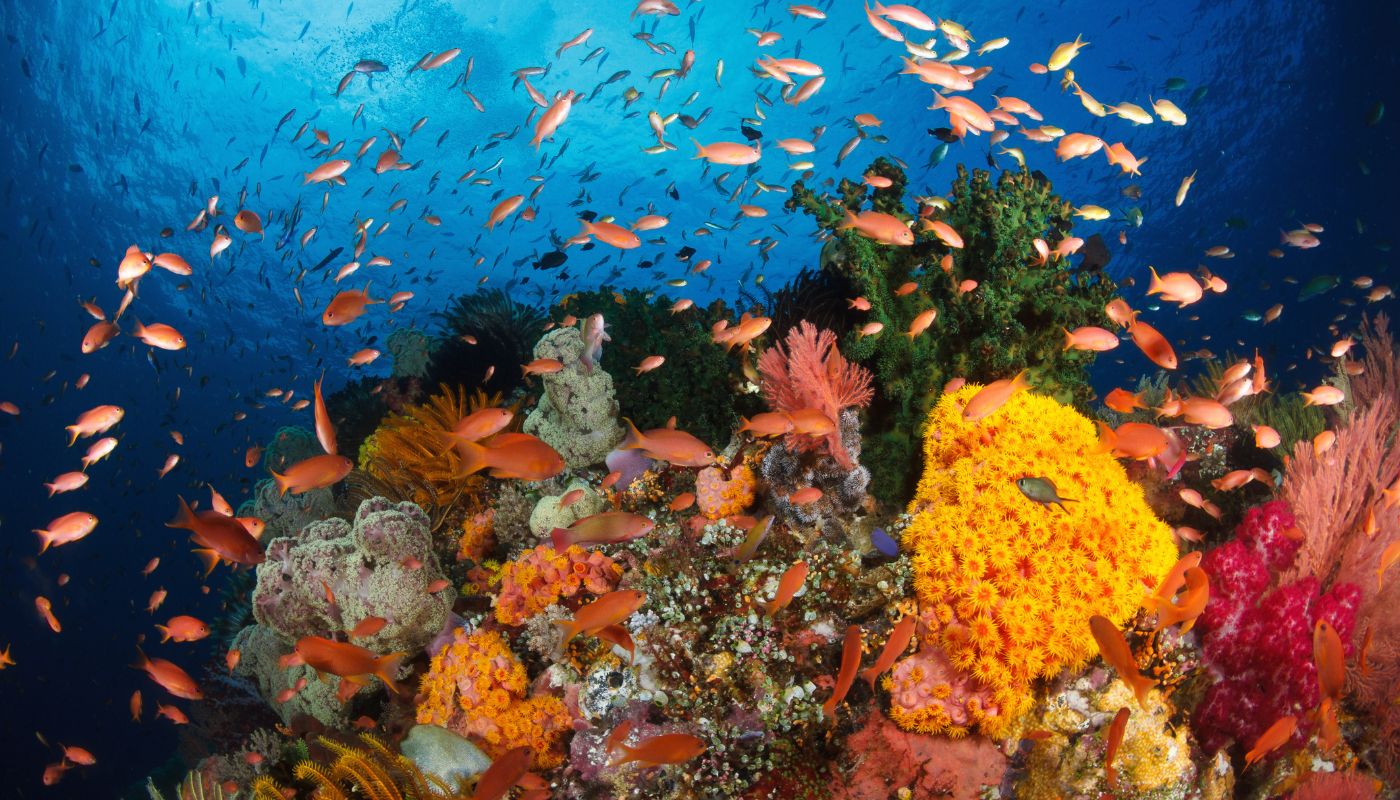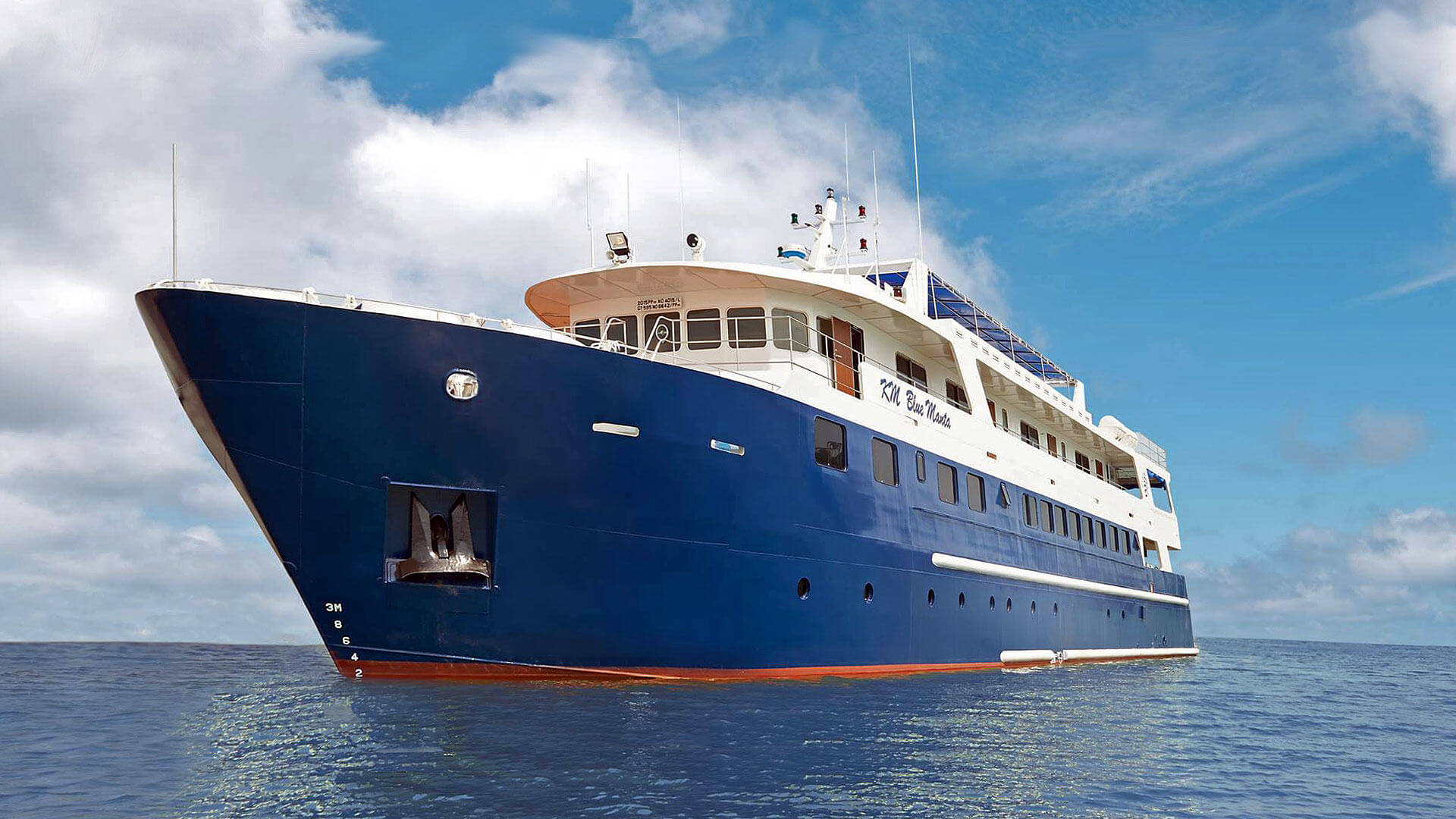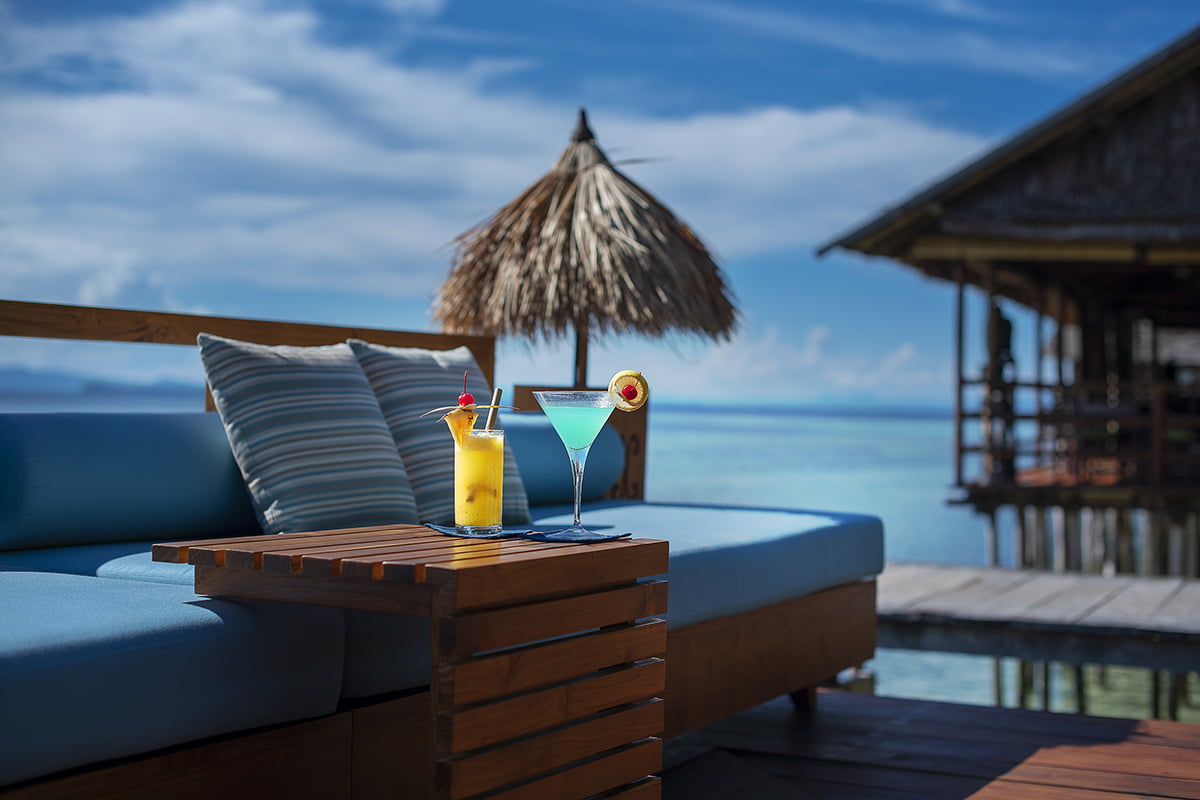Raja Ampat, the most biodiverse marine ecosystem on earth
Raja Ampat stands far above any other snorkeling or diving destination. This inspiring expedition stops at 12 unforgettable locations that include pristine islands, secluded bays and pristine beaches, fully revealing this “Amazon of the Seas” both in the water and on land. Encounter marine species that most travelers only dream of seeing, explore largely untouched swimming and diving sites, and walk forest trails that end in postcard-perfect vistas as you toast each extraordinary day from the sundeck of your exclusively chartered expedition yacht.
What is it Famous For?
Raja Ampat, located in Indonesia’s West Papua province, is renowned for its stunning natural beauty and incredible biodiversity. Here are the key highlights:
Marine Biodiversity: Raja Ampat is often called the “Amazon of the Seas” due to its extraordinary marine life. It’s home to over 1,500 species of fish, 600 species of coral, and numerous species of mollusks, making it one of the most biodiverse marine habitats on the planet.

Amazon of the Seas
Diving and Snorkeling: The region offers some of the best diving and snorkeling spots in the world. Visitors can explore vibrant coral reefs, encounter majestic manta rays, and see rare marine species.
Scenic Landscapes: The islands are known for their dramatic karst landscapes, crystal-clear waters, and pristine beaches. The view from the top of Wayag Island, with its iconic limestone islands, is particularly famous.
Bird Watching: Raja Ampat is also a bird-watcher’s paradise, with endemic species such as the Wilson’s bird-of-paradise and the red bird-of-paradise.
Who Can Take Me to Raja Ampat?
Liveaboard Cruises:
Blue Manta: Offers luxury liveaboard diving cruises with spacious cabins, professional dive guides, and comprehensive itineraries covering the best dive sites.

Blue Manta Liveaboard
Raja Ampat Aggressor: Known for its excellent service, experienced crew, and well-planned dive schedules.
Mermaid Liveaboards: Provides high-quality liveaboard experiences with a focus on safety, comfort, and top-notch diving.
Dive Resorts:
Misool Eco Resort: A high-end eco-resort situated in a private marine reserve, offering exceptional diving and snorkeling opportunities.
Papua Paradise Eco Resort: Located on the island of Birie, this resort combines traditional Papuan architecture with modern amenities, ideal for divers and nature enthusiasts.

Papua Paradise Resort
Sorido Bay Resort: Known for its prime location near some of the best dive sites and a strong commitment to sustainable tourism.
Local Tour Operators:
Raja Ampat Biodiversity Eco Resort: Offers personalized diving packages and eco-friendly accommodations, focusing on sustainability and conservation.

Biodiversity Eco Resort
Dive Raja Ampat: Provides a variety of diving and snorkeling packages, including customized tours to suit different levels of experience.
Kayak4Conservation: Specializes in guided kayaking tours, allowing visitors to explore the stunning seascapes and remote islands of Raja Ampat at a leisurely pace.
Is It Worth Going to Raja Ampat?
Yes, Raja Ampat is definitely worth visiting, especially for those who love nature, marine life, and adventure. The pristine environment, unparalleled biodiversity, and breathtaking landscapes make it a unique destination. However, due to its remote location, getting there can be challenging and costly, so it’s important to plan carefully.

How Much Does It Cost to Go to Raja Ampat?
The cost can vary widely depending on the type of trip and level of comfort you choose:
Flights: International flights to Indonesia and domestic flights to Sorong (the gateway to Raja Ampat) can range from $500 to $1,500 or more, depending on the season and departure location.
Accommodation: Budget homestays can cost around $30-$50 per night, while mid-range resorts might charge $100-$300 per night. Luxury resorts and liveaboard cruises can cost $300-$1,000 per night or more.
Diving Packages: Daily diving costs vary, but expect to pay around $100-$200 per dive. Liveaboard trips, which include accommodation and diving, typically range from $200 to $400 per day.
Miscellaneous: Additional costs include food, park entry fees (approximately $100), and transportation between the islands.
What Are the Best Months To Go There?
The best time to visit Raja Ampat is during the dry season, which runs from October to April. During these months, the weather is generally calm and visibility underwater is at its best, making it ideal for diving and snorkeling. January and February are particularly good months, with optimal conditions for marine activities.
For Diving Holidays, You May Also Like
Diving in Belize and experience superb diving
Apo is a South Asian gem and breathtaking coral reef
The Galapagos islands is home of the rarest species




